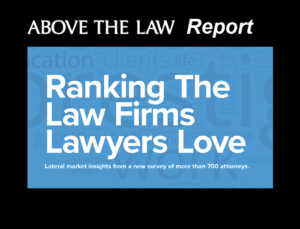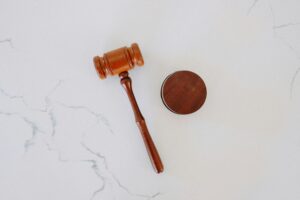Flat Is The Future ...
The juicier stuff often lies in the analysis of the fees charged by the winning side’s lawyers.
 Pound for pound, it is hard to top reading attorney’s fees decisions as a worthwhile investment of time for patent litigators. They don’t come around so often, even in these post-Octane days of weaponized attorney’s fees motions in patent cases, but they have much to teach us. Take the case profiled in my June 2018 column on this issue. There, I noted how “patent litigation defendants who are clearly unprepared to mount a full defense of the case brought against them” were at risk of being tagged with attorney’s fees when their inevitable loss came along. And how, as a practical matter, patent litigators pitching for defense work would do well to make sure that the prospective client had the resources and will to take the fight to the end before signing on as defense counsel. Nothing magical, just an easy example of a lesson learned from reviewing just one attorney’s fees decision.
Pound for pound, it is hard to top reading attorney’s fees decisions as a worthwhile investment of time for patent litigators. They don’t come around so often, even in these post-Octane days of weaponized attorney’s fees motions in patent cases, but they have much to teach us. Take the case profiled in my June 2018 column on this issue. There, I noted how “patent litigation defendants who are clearly unprepared to mount a full defense of the case brought against them” were at risk of being tagged with attorney’s fees when their inevitable loss came along. And how, as a practical matter, patent litigators pitching for defense work would do well to make sure that the prospective client had the resources and will to take the fight to the end before signing on as defense counsel. Nothing magical, just an easy example of a lesson learned from reviewing just one attorney’s fees decision.
In addition to learning what to do to avoid an attorney’s fee award, attorney’s fees decisions are valuable for a few other reasons. For one, they often present insights into how district court judges weigh the merits of arguments made in patent cases. While a judge may or may not let the parties know whether a summary judgment or claim construction decision was a close call at the time it was made, attorney’s fees motions force that same judge to provide an honest appraisal of the strength or infirmity in the arguments underlying the critical decisions in the case. Additionally, attorney’s fees decisions are helpful in terms of analyzing the factors that lead to a patent case being decided on the merits, as opposed as through the overwhelmingly usual vehicle of settlement.
There is also a voyeuristic element to attorney’s fees decisions, at least for those of us interested in the costs of patent litigation. Yes, it is important to know what types of costs will be credited by the court to the winning party. But the juicier stuff often lies in the analysis of the fees charged by the winning side’s lawyers — including whether the judge in a particular case is willing to determine that those fees are reasonable. As we all know, hourly rates for senior patent litigators can easily approach four figures — and rare is the litigation firm (Biglaw or boutique) where even junior associate rates are less than three hundred or four hundred dollars an hour. While most attorney’s fees decisions involve some commentary from the judge as to whether such rates are reasonable, it seems like judges around the country recognize that patent litigation is a premium practice and is priced accordingly. So as long as there is no obvious overcharging, most attorney’s fees requests seem to pass muster more or less intact.

Law Firm Business Development Is More Than Relationship Building
One thing, however, is clear about the overwhelming majority of attorney’s fees decisions to date. They hold tight to the traditional hourly billing model as the basis for determining fee awards. Which makes sense, considering how entrenched hourly billing for most litigation remains. At the same time, alternative billing models — such as flat-fee or hybrid arrangements — have taken hold, especially at the upper echelons of the litigation universe. In the patent realm, some of the leading proponents of alternative fee arrangements have been leading litigation boutiques, even as Biglaw IP groups have also been forced to compete by deviating from their sky-high hourly scales as well. While these alternative billing arrangements have taken root in patent disputes, there has not been much discussion yet of how to treat such arrangements in the context of attorney’s fees awards. Probably because so few patent cases actually reach that stage.
The scarcity of discussion on the changing reality of how IP firms charge clients for patent work in attorney’s fees decisions presents a challenge for clients, lawyers, and courts forced to confront such issues. I was happy, therefore, to see that a recent attorney’s fees decision addressed some of these thorny issues head-on. The case at issue involved Straight Path IP — a former darling of the publicly traded patent enforcement business era — as well as tech heavyweights Apple and Cisco. With the latter prevailing at trial and appeal, the inevitable attorney’s fee motion ensued. Once granted, the court decided to appoint a special master to sort out the fee awards to Apple and Cisco. While the award to Apple was relatively straightforward, Cisco’s use of alternative fee arrangements with its counsel made for a more interesting treatment.
In fact, the special master (Matthew Borden) did an excellent job of framing the issues around alternative fee arrangements in the attorney’s fees context. For one, his report discusses the increased adoption of alternative fee arrangements by sophisticated litigants like Cisco and Microsoft, as well as the motivations that make such arrangements attractive for those companies and their chosen firms. At the same time, the report recognizes that large contingency fees have traditionally not been recoverable for a prevailing party — and that under certain circumstances a flat-fee arrangement could mimic a large contingency fee if the result was achieved with fewer hours than expected. Or that “opportunity for mischief exists” with certain types of fee structures, particularly where the client and firm may be tempted to engineer a larger-than-necessary fee to gain leverage over a counterparty. At the same time, the report suggests that reasonable flat fees should be recoverable in patent cases, subject to some measure of accountability and judicial review.
Ultimately, the special master in Straight Path recommended that Cisco recover half of its expended fees, based in part on the unique circumstances of the case, including that Cisco had swapped counsel midstream. Despite the haircut, Cisco was entitled to recover nearly $2 million in fees — a sizeable sum by any measure. More importantly for both Cisco and future patent litigants, the report provides a welcome starting point for courts confronting flat fee arrangements in attorney’s fees motions. Because flat is the future, at least when it comes to fee arrangements in patent cases.
Sponsored

AI Presents Both Opportunities And Risks For Lawyers. Are You Prepared?

Law Firm Business Development Is More Than Relationship Building

Ranking The Law Firms Lawyers Love

Curbing Client And Talent Loss With Productivity Tech
Please feel free to send comments or questions to me at [email protected] or via Twitter: @gkroub. Any topic suggestions or thoughts are most welcome.
Gaston Kroub lives in Brooklyn and is a founding partner of Kroub, Silbersher & Kolmykov PLLC, an intellectual property litigation boutique, and Markman Advisors LLC, a leading consultancy on patent issues for the investment community. Gaston’s practice focuses on intellectual property litigation and related counseling, with a strong focus on patent matters. You can reach him at [email protected] or follow him on Twitter: @gkroub.
Sponsored

Luxury, Lies, And A $10 Million Embezzlement








